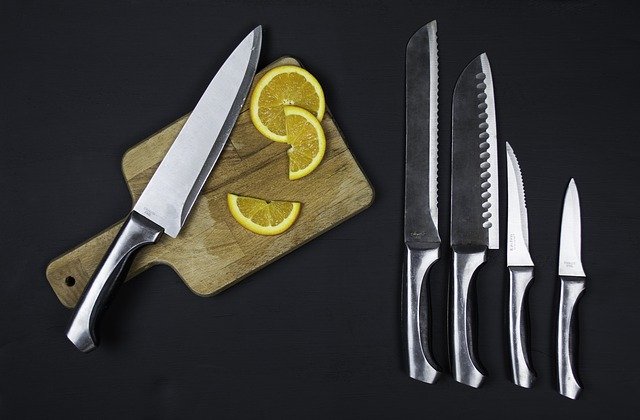Food remains a universal topic that resonates with nearly everyone. People gather recipes, search for healthier meal options, and experiment with global flavors on a regular basis. This sustained interest makes the food and cuisine niche appealing for affiliates. From meal kit subscriptions to cooking gadgets, there is a wealth of options to monetize through thoughtful recommendations. The text below discusses the strengths of this niche, how to establish your platform, best practices for expanding your audience, and some of the partnerships worth exploring.
Why the Food Category Continues to Thrive
Many individuals look for creative ways to manage daily meals—whether it involves quick recipes to accommodate a busy schedule or exotic dishes that broaden culinary horizons. This constant curiosity drives a high level of engagement on social platforms where images of plated dishes or short cooking clips can go viral. Affiliates can plug in by offering comprehensive guides, specialized reviews, and interactive videos. Additionally, food preferences vary widely—from vegan to gluten-free or strictly organic—so creators can target subgroups that are eager for specific solutions. Loyal readers often return for new recipe ideas, fueling steady traffic and ongoing opportunities for promotions.
Selecting Your Approach
The food sphere is far-reaching, so consider narrowing down to a particular theme. A blog might concentrate on plant-based diets, exploring everything from protein substitutes to tips for cost-effective vegan meal prep. Another channel might fixate on upscale dining, reviewing high-end restaurants or premium cooking tools. Such clarity helps shape your brand identity and guide the content you produce. Within this framework, integrate step-by-step recipes, complete with ingredients and detailed instructions. Photos or short videos add an appetizing dimension that can boost shares. Including personal stories—where a recipe originated, who taught you, or why you love it—helps cultivate a bond with readers, prompting them to return.
Driving Traffic with Food Content
Food imagery excels on visual platforms such as Instagram, Pinterest, and TikTok. Brief, enticing clips of a dish mid-preparation or the final plated result can quickly capture attention. For SEO, structure recipe posts so that search engines can readily display them. Specific phrases like “best low-carb pasta sauce recipe” or “authentic Mexican street tacos” often do well. Joining relevant Facebook groups or cooking forums is another strategy—answer user questions or share reliable tips, linking back to your site only when it offers truly relevant value. Email marketing also has potential. Sending weekly meal plans, grocery lists, or seasonal cooking ideas can keep your brand top of mind.
Recommended Offers in the Food Arena
Meal kit services that deliver fresh ingredients draw in busy professionals who want convenience without compromising on flavor. Many pay a recurring fee per subscriber. Specialty cooking tools—like immersion blenders or artisanal knives—carry decent commissions too. Niche ingredient producers (e.g., gluten-free flours, special spice blends) may collaborate with affiliates to reach broader audiences. Digital products, including cookbooks or recipe apps, can fit seamlessly in blog posts or newsletters. Ensure each endorsement lines up with your sub-niche. For instance, a vegan site might highlight dairy-free cheese brands rather than general consumer items that contain animal-derived products.
Tips for Authenticity and Growth
Trust is fundamental in the food niche. If you vouch for a cooking gadget, demonstrate how you used it to achieve particular results. Share your honest feedback on its strengths and any small limitations so that readers feel informed. Showing your process—triumphs and minor kitchen mishaps included—can endear you to the community. Collaborations with fellow chefs or food bloggers, such as recipe swaps or guest videos, can broaden your network. Keep a careful balance: sprinkle in promotional links where they naturally fit, but ensure free content—how-to guides, cooking hacks, or regional cuisine facts—remains the backbone of your site.
Moving Forward
Once established, you can branch into meal planning services or cooking masterclasses. Readers who consistently enjoy your recipes may welcome personalized advice. If you decide to examine how your content approach might intertwine with other topics, check niche affiliate marketing resources. You could, for example, add a health focus by exploring nutrition tips or pair cooking with sustainable living themes. Sustained growth ultimately comes from engaging storytelling, mouthwatering visuals, and proven credibility in the kitchen.
Conclusion
Food stands as a beloved subject that prompts near-constant exploration. Whether you emphasize quick family meals, gourmet dishes, or specialized diets, your platform can thrive by consistently providing honest and enticing content. By aligning with meal kits, niche food retailers, or trusted cookbooks, you can monetize effectively. Above all, a personal, open-handed approach—revealing your culinary passion and experiences—draws in visitors who are eager to try your suggestions for themselves. Over time, this builds a loyal audience that eagerly awaits each new recipe or product recommendation you have to offer.


